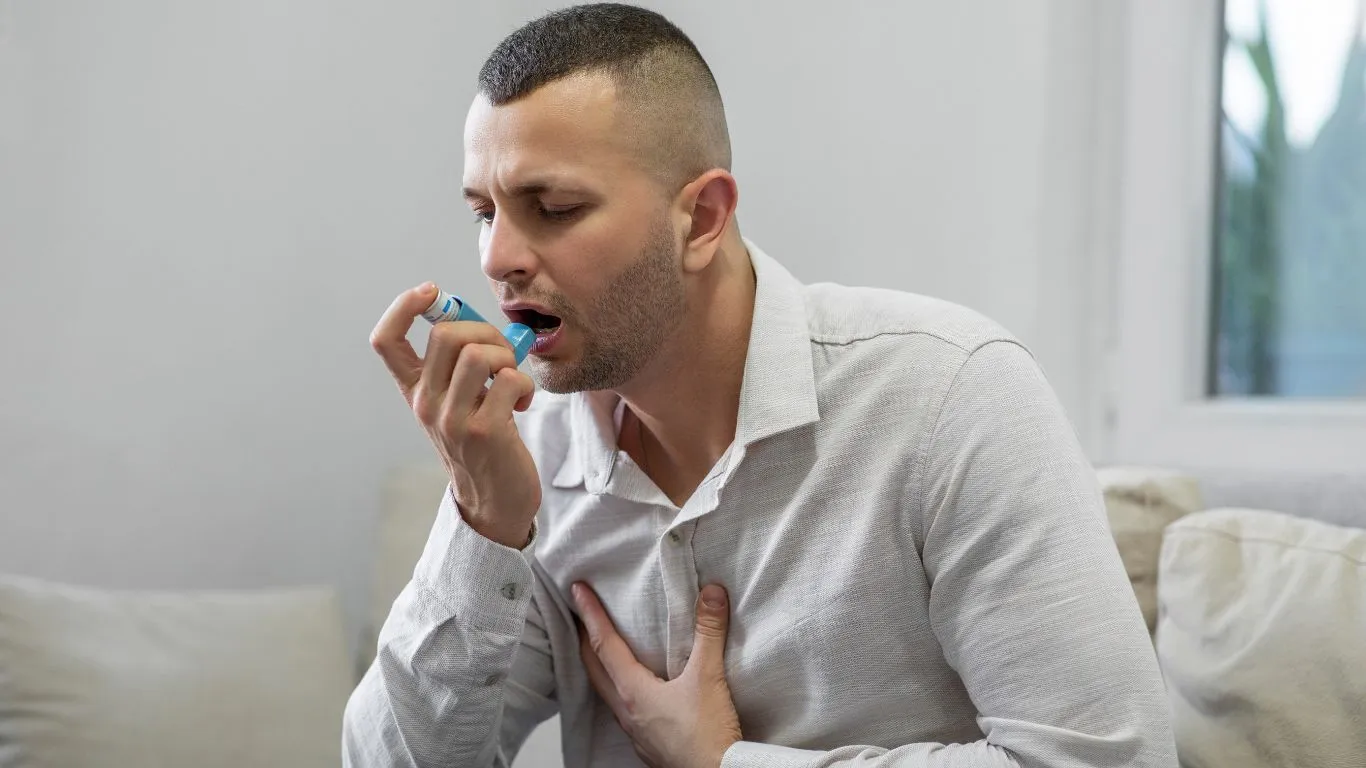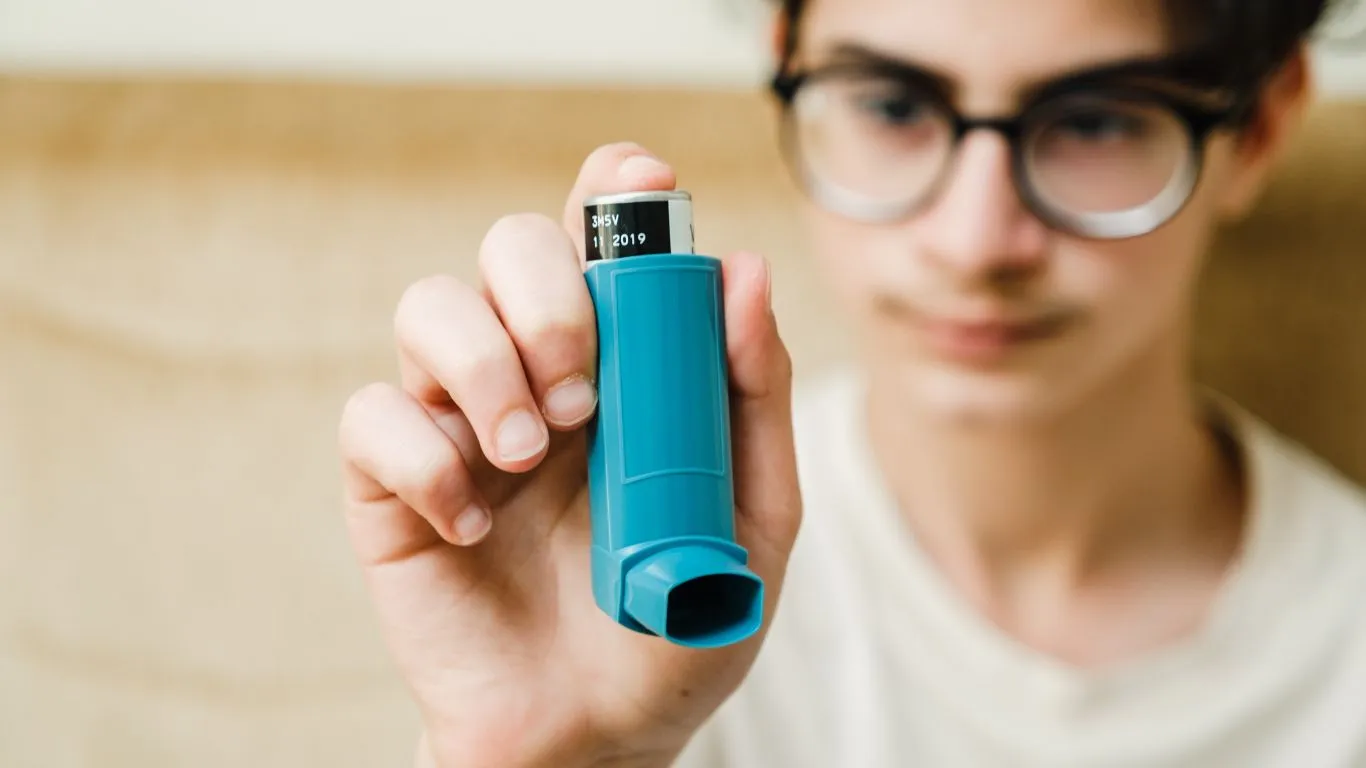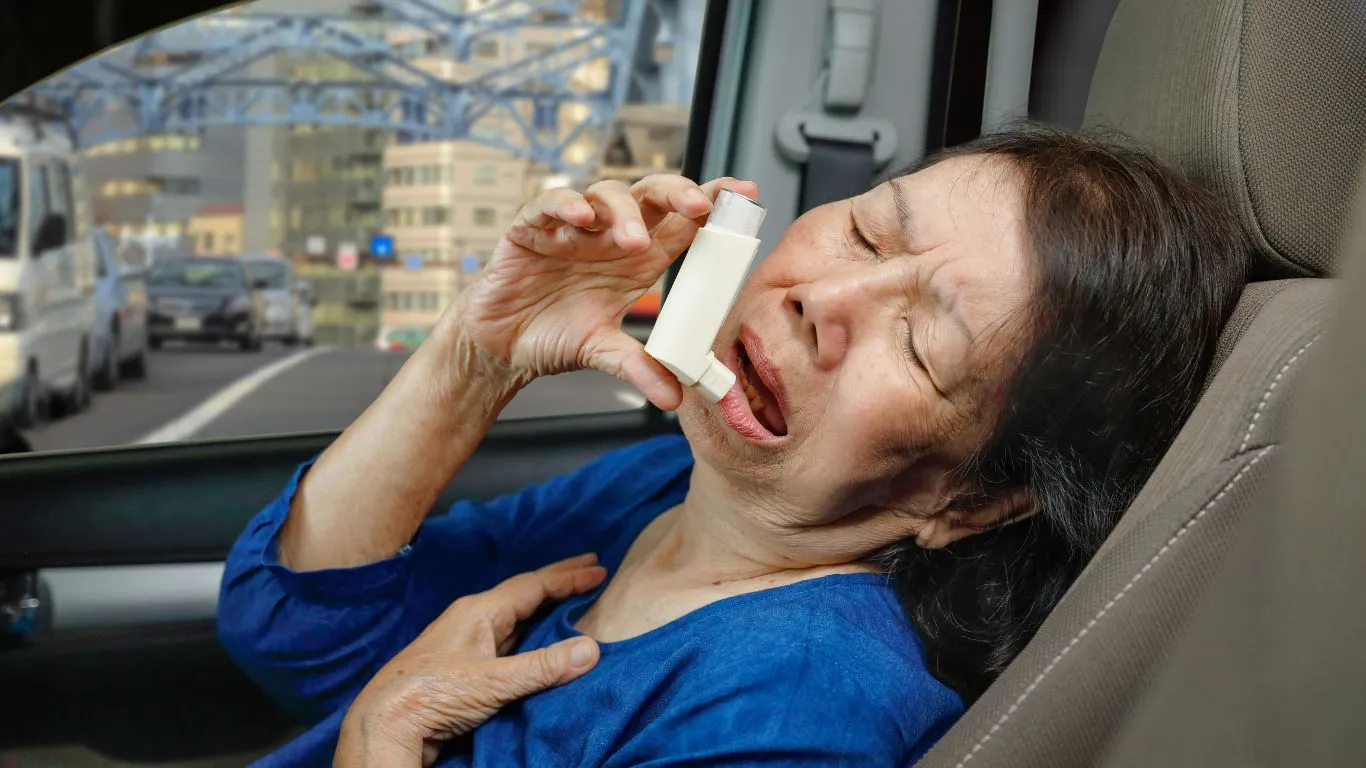How to Manage Asthma During Wildfire Season: Essential Tips to Breathe Easy
As someone who’s spent years working closely with patients as a pulmonary nurse practitioner, I’ve seen firsthand how terrifying and frustrating asthma can be—especially when wildfire smoke turns the air into a health hazard. If you’re wondering how to manage asthma during wildfire season, trust me, you’re not alone. Every year, it seems like wildfire smoke gets worse, and with it comes a surge in breathing issues. Let’s talk about the real-world strategies I’ve seen work, both in clinical settings and with my own family members living with asthma.
Why Wildfire Season Is a Game-Changer for Asthma

When wildfires hit, they don’t just destroy land—they send tiny, dangerous particles into the air that can travel hundreds of miles. These particulates, especially PM2.5 (particulate matter smaller than 2.5 microns), are small enough to sneak deep into your lungs and trigger inflammation. Even people without respiratory issues might feel tightness or coughing. For those with asthma? It can be a full-blown respiratory crisis.
Every summer, I watch ERs fill up with asthma patients struggling to breathe. It’s not just smoke you see—it’s the invisible stuff that’s the real problem. As a practitioner, I can’t stress enough how important it is to have a plan before the air turns gray.
What Happens to Your Lungs During a Wildfire?
Wildfire smoke causes inflammation, increases mucus production, and narrows airways—all of which spell trouble for asthmatics. You might notice your chest feels tighter, or that you’re using your rescue inhaler more than usual. That’s your body sounding the alarm.
Creating Your Wildfire Asthma Toolkit

One thing I always recommend to my patients: build a wildfire asthma kit. Think of it like a mini survival pack, but for your lungs. You don’t want to be scrambling for meds once the smoke’s already thick outside. Here’s what I usually suggest:
- Rescue Inhaler: Always, always have it with you. Make sure it’s not expired.
- Spacer: Helps you get more meds into your lungs—especially useful during flare-ups.
- Peak Flow Meter: To monitor how well your lungs are working. Super helpful if you’re unsure whether you’re just anxious or actually having a breathing problem.
- Extra Masks: N95 or KN95s can help filter out smoke particles. Not perfect, but better than nothing.
- Air Purifier: At home, this can make a huge difference. I recommend HEPA filters for best results.
Personal tip: I keep a second set of supplies in my car. You never know where you’ll be when the air quality takes a dive. I’ve had patients stuck in traffic during a flare-up—it’s not fun.
Medications: Stay Ahead of the Curve
Now’s the time to review your asthma action plan. If you don’t have one, get one. I go over this with every single one of my patients before summer starts. Talk to your provider about whether you should start or increase a controller medication like an inhaled corticosteroid ahead of wildfire season. Don’t wait for symptoms to ramp up.
- Know your triggers: If smoke consistently sets you off, ask about pre-treatment protocols during wildfire alerts.
- Check refill dates: You’d be surprised how many people wait until the last puff to refill.
- Keep everything in one place: That includes your asthma action plan, meds, and emergency contacts.
Keep an Eye on the Air Quality

Get in the habit of checking the AQI (Air Quality Index) every day during wildfire season. There are some great apps like AirNow or IQAir that I’ve recommended to patients over the years. If the AQI starts to creep over 100, it’s time to take precautions—even if you feel fine. With asthma, it’s not about reacting; it’s about staying ahead of the smoke.
Living with asthma is hard enough without adding wildfire smoke to the mix. But the more you prepare now, the more control you’ll have when the skies turn smoky. I’ve walked this path with so many patients—and believe me, small steps can make a massive difference in keeping you out of the ER.
Staying Indoors Doesn’t Mean You’re Totally Safe

One of the biggest misconceptions I’ve heard from patients is, “I’m indoors, so I’m safe.” I wish that were totally true. Unfortunately, wildfire smoke doesn’t respect boundaries—it can seep through windows, doors, and even tiny cracks in your home. That’s why it’s important to make your living space as airtight and asthma-friendly as possible during high-smoke days.
When the smoke rolls in, I turn into a bit of a homebody prepper. Here’s what I do at my place and recommend to my patients too:
- Seal windows and doors: Weather stripping or even a rolled towel at the base of doors helps.
- Close the fireplace damper: A forgotten flue is an open invitation for smoke.
- Run an air purifier with a HEPA filter: These things are lifesavers. I keep one in my bedroom and one in the living room.
- Avoid vacuuming during high-smoke days: It can stir up indoor particles. Mop or use a damp cloth instead.
Little side story: A couple of summers ago, one of my regulars—an older gentleman with brittle asthma—was having back-to-back flare-ups even though he wasn’t going outside. Turns out his AC unit was bringing in outside air without proper filtration. We switched it to recirculate mode and installed a window air filter, and the difference was night and day.
Limit Outdoor Time—but Be Smart About It

We all have errands to run and lives to live, and staying locked up for days on end isn’t always possible. But during wildfire season, you’ve got to be strategic. I usually tell my patients, “Pretend you’re a vampire—go out early in the morning or late in the evening, when smoke levels tend to dip a bit.”
Here are a few quick-hit tips for safer outdoor activity:
- Check AQI before stepping out: Under 100 is your sweet spot. Over 150? Try to reschedule anything non-essential.
- Wear a properly fitted N95 or KN95 mask: They’re not 100% protective, but they help. Cloth masks? Not so much for smoke.
- Keep your rescue inhaler close: I’ve had patients who leave it at home—don’t. Keep it on you like your phone.
- Hydrate well: Dry air and smoke can irritate airways. Water helps thin mucus and soothe inflammation.
Quick tip: I keep a little “on-the-go asthma kit” in my tote. Inhaler, mask, water bottle, and even a mini air quality monitor I found online. It’s become second nature now.
How to Talk to Your Doctor About Asthma and Wildfires

It blows my mind how many people just “tough it out” through wildfire season without checking in with their provider. Don’t wait until things get scary. Your doctor or nurse practitioner can help fine-tune your asthma action plan and maybe even adjust your meds temporarily to give you better control during the smoky months.
What to Ask Your Provider
- Should I be taking a daily controller if I’m not already?
- Can I increase my maintenance dose during wildfire alerts?
- Is it time to get a refill or update my asthma action plan?
- Do I qualify for a nebulizer at home for emergencies?
Also, if you’re using your rescue inhaler more than twice a week—that’s a red flag. I always tell my patients that’s your lungs’ way of screaming for help. Don’t ignore it.
Don’t Forget Your Mental Health
Let’s be real—dealing with chronic illness like asthma and the added anxiety of wildfire smoke can really mess with your mental game. I’ve had patients come in crying, not just from physical symptoms but from sheer overwhelm. You’re not being dramatic—it’s a lot.
Simple things that can help:
- Guided breathing apps: Calm, Headspace, or even YouTube videos can help center you when breathing feels stressful.
- Reach out: Chat with friends, family, or a therapist if you’re feeling isolated or anxious.
- Keep a journal: Not just for symptoms, but for venting frustrations. It’s surprisingly therapeutic.
Just remember—you’re not alone in this. I see you. I’ve treated people just like you who are navigating the same smoky, wheezy waters. There’s no shame in needing a little extra support when the air feels like it’s turned against you.
Emergency Signs: When to Seek Immediate Help

Knowing when to handle asthma symptoms at home and when to get emergency care can be life-saving. From my years as a pulmonary nurse practitioner, I’ve seen how fast asthma can escalate—especially when wildfire smoke is involved. If you or someone you care for experiences any of the following, don’t hesitate—head straight to the ER or call 911:
- Severe shortness of breath that doesn’t improve with your inhaler.
- Difficulty speaking in full sentences due to breathlessness.
- Lips or face turning blue or gray.
- Rapid worsening of wheezing or coughing.
- Chest tightness or pain that feels different or more intense than usual.
- Confusion, dizziness, or extreme fatigue.
It might feel scary to go to the hospital during wildfire season, especially if the smoke is thick outside, but your health has to come first. In emergencies, time is everything. Trust your instincts—if it feels serious, don’t wait it out.
Practical Daily Habits That Help Your Lungs Stay Strong

Aside from avoiding smoke and using your medications properly, there are some simple lifestyle habits that I recommend to keep your lungs in the best shape possible year-round, and especially during wildfire season:
- Stay hydrated: Water helps thin mucus, making it easier to clear your airways.
- Maintain a balanced diet rich in antioxidants: Foods like berries, leafy greens, and nuts can help reduce inflammation.
- Exercise smart: Low-impact activities like walking or yoga can strengthen respiratory muscles without overtaxing your lungs.
- Practice breathing exercises: Techniques like pursed-lip or diaphragmatic breathing can improve airflow and calm anxiety.
- Get vaccinated: Flu and pneumonia vaccines are especially important for people with asthma to prevent complications.
From my experience, patients who integrate these habits tend to feel more resilient during tough air quality days. The body is amazing at adapting when we give it a little TLC.
Supporting Children and Elderly Family Members
Wildfire season can be extra challenging for kids and seniors with asthma. Their lungs and immune systems are more vulnerable, so extra care is crucial. I often get asked by parents and caregivers about how to keep little ones safe and comfortable.
- Limit outdoor playtime during smoke alerts: It’s tempting to let kids burn off energy outside, but smoky air can trigger severe symptoms quickly.
- Use pediatric-approved masks: Finding the right size and fit is important, and some kids simply won’t tolerate masks, so indoor air quality becomes even more critical.
- Ensure they take medications as prescribed: Sometimes kids resist inhalers, so making it a routine and positive experience helps.
- Keep a close eye on subtle signs: Young children can’t always tell you how they feel, so watch for coughing, wheezing, or unusual tiredness.
- Coordinate with schools or caregivers: Make sure they’re aware of the asthma plan and any special instructions for wildfire days.
For elderly family members, similar vigilance applies. Many older adults have other health issues that can complicate asthma, so staying in touch with their healthcare team during wildfire season is key.
Resources and Support for Managing Asthma During Wildfire Season
Managing asthma in wildfire-prone areas can feel overwhelming, but you don’t have to do it alone. Here are some trustworthy organizations and tools I recommend to stay informed and supported:
- American Lung Association – Great resources on asthma and wildfire smoke.
- U.S. Environmental Protection Agency (EPA) – Up-to-date air quality information and safety tips.
- Centers for Disease Control and Prevention (CDC) – Public health guidance for respiratory conditions.
- National Heart, Lung, and Blood Institute (NHLBI) – Expert advice and research on asthma management.
Disclaimer
This article is intended for informational purposes only and should not replace professional medical advice. Always consult your healthcare provider for diagnosis and treatment tailored to your specific needs, especially when managing asthma during wildfire season. In case of emergency, seek immediate medical attention.

Bianca Nala is a compassionate Nurse Practitioner with a strong background in primary and respiratory care. As a health writer for Healthusias.com, she combines her clinical expertise with a talent for clear, relatable storytelling to help readers better understand their health. Bianca focuses on topics like asthma, COPD, chronic cough, and overall lung health, aiming to simplify complex medical topics without losing accuracy. Whether she’s treating patients or writing articles, Bianca is driven by a single goal: making quality healthcare knowledge accessible to everyone.






